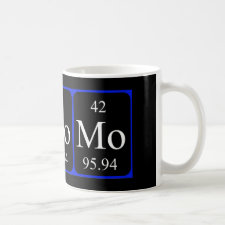
Authors: Wang Y, Liu JB, Tang SS, Jin RF, Chang HB
Article Title: Study on the Melamine Molecularly Imprinted Polymer by Computer Aided Design.
Publication date: 2015
Journal: Acta Polymerica Sinica
Issue: (6)
Page numbers: 641-649.
DOI: 10.11777/j.issn1000-3304.2015.14382
Alternative URL: http://www.gfzxb.org/EN/abstract/abstract14282.shtml
Abstract: The density functional theory (DFT) and long range corrections method are applied to simulations of the self-assembly system of the molecularly imprinted polymers (MAM-MIPs). Melamine (MAM) was taken as the template molecule and methacrylic acid (MAA) was taken as the monomer, the ethylene glycol dimethacrylate (EGDMA), trimethacrylate (TRIM), and divinylbenzene (DVB) was taken as the cross-linking agents. And the acetonitrile (ACN), methanol (MT), ethanol (EA), toluene (TL), tetrahydrofuran (THF), and dimethylsulfoxide (DMSO) was taken as the solvents. The geometry optimization, the bonding situation of MAM and MAA, the imprinted ratio of the stable complex, and the reaction mechanism were discussed. The optimizations of the cross-linking agents and solvents were according to the bond energy (Δ E). The nature of the imprinting effect was also studied by the atoms in molecules (AIM) theory. The results indicate that the N atom on the three triazine ring as well as H atom on the amine of MAM and MAA monomer have interaction to form imprinted polymers via the hydrogen bonds. The molar ratio of 1:6 had the strongest stability. DVB was the best cross-linking agent of MAM-MIPs in comparison with the TRIM and EGDMA,. The study can provide a theoretical reference for the optimization of the imprinting ratio and the choice of cross-linking agent and solvent on MAM-MIPs.
Template and target information: melamine, MAM
Author keywords: Melamine, methacrylic acid, Molecular imprinting calculation, Imprinted ratio, Cross linking agent, solvent



Join the Society for Molecular Imprinting

New items RSS feed
Sign-up for e-mail updates:
Choose between receiving an occasional newsletter or more frequent e-mail alerts.
Click here to go to the sign-up page.
Is your name elemental or peptidic? Enter your name and find out by clicking either of the buttons below!
Other products you may like:
 MIPdatabase
MIPdatabase









